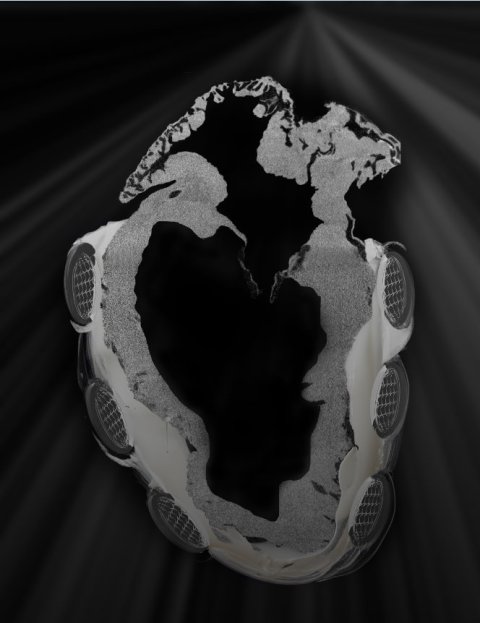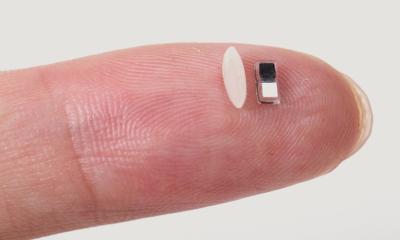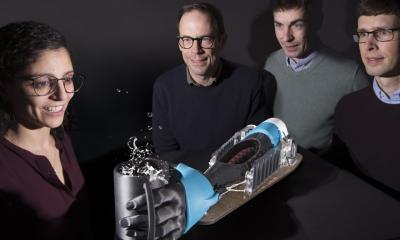News • Cardiac valve simulator
A biorobotic heart for better valve stimulation
Combining a biological heart and a silicone robotic pump, researchers created a biorobotic heart that beats like a real one, with a focus on a valve on the left side of the heart.

Image credit: Manisha Singh
The heart valve simulator, presented in the journal Device, can mimic the structure, function, and motion of a healthy or diseased heart, allowing surgeons and researchers to demonstrate various interventions while collecting real-time data.
“The simulator has a huge benefit as a research tool for those who study different heart valve conditions and interventions,” says senior author and biomedical engineer Ellen Roche of the Massachusetts Institute of Technology. “It can serve as a surgical training platform for clinicians, medical students, and trainees, allow device engineers to study their new designs, and even help patients better understand their own disease and potential treatments.”
Before new interventions reach humans, they undergo rigorous testing in heart simulators and animal subjects. However, current heart simulators don’t completely capture the complexity of a heart and have a short shelf-life of two to four hours. Animal studies are expensive and time consuming, and the findings may not always translate to humans. The biorobotic heart can bridge these gaps as a less expensive method with a shelf life of months.
The researchers focused on mitral regurgitation, a disorder in which the valve between the left heart chambers doesn’t close properly—resulting in a leaky heart valve where blood can flow backwards. This condition, affecting about 24.2 million people worldwide, can cause shortness of breath, swelling in the limbs, and heart failure. Given the intricacy of the valve’s structure, surgeries to correct the disorder are highly complex, highlighting a need for effective technology and precise surgical techniques.
Recommended article

Article • Research, diagnostics, therapies
Focus on Cardiology
Arrhythmias, valve defects, heart attacks: Cardiologists face a wide range of disorders and diseases. Equally diverse are diagnostics and therapeutic options. Find out what the field has to offer.
To better understand the mitral valve in healthy and diseased states, the team built a biorobotic heart based on a pig heart. The researchers replaced the heart muscle in the left chamber with a silicone-made soft robotic pump system actuated by air. When inflated, the system twists and squeezes the heart like real heart muscle, pumping artificial blood through a mock circulation system and simulating the beat of a biological heart.
It was really interesting for the surgeons to see every step. When you’re working with patients, you can’t visualize the process because there’s blood in the heart
Ellen Roche
When the team damaged the mitral valve in the biorobotic heart, it showed characteristics of a leaky heart valve. The team then had cardiac surgeons correct the damage with three different techniques: anchoring the flailing valve leaflet tissue with artificial chords, replacing the valve with a prosthetic valve, and implanting a device to help valve leaflet closing.
All three procedures were successful, bringing the pressure, flow, and heart function to normal. The system also enabled the research team to collect real-time data during surgery and is compatible with current imaging technologies used in the clinics. Because the artificial blood used in the system is clear, it also allows direct visualization of the procedure. The findings demonstrated the device as a new heart model.
“It was really interesting for the surgeons to see every step,” says Roche. “When you’re working with patients, you can’t visualize the process because there’s blood in the heart.” She foresees their heart model as a realistic environment for cardiac surgery training and practice.
Next, the team aims to optimize the current biorobotic heart system by shortening the production time and lengthening the shelf life even more. Instead of using a pig heart, they’re also exploring 3D printing technology to recreate a synthetic human heart for the system. “Our biorobotic heart may help improve the device design cycle, allow rapid iterations, get things approved by regulatory bodies, and launch them into the market quickly,” says Roche. “Expediting and improving these processes will ultimately benefit patients.”
Source: Cell Press
11.01.2024











